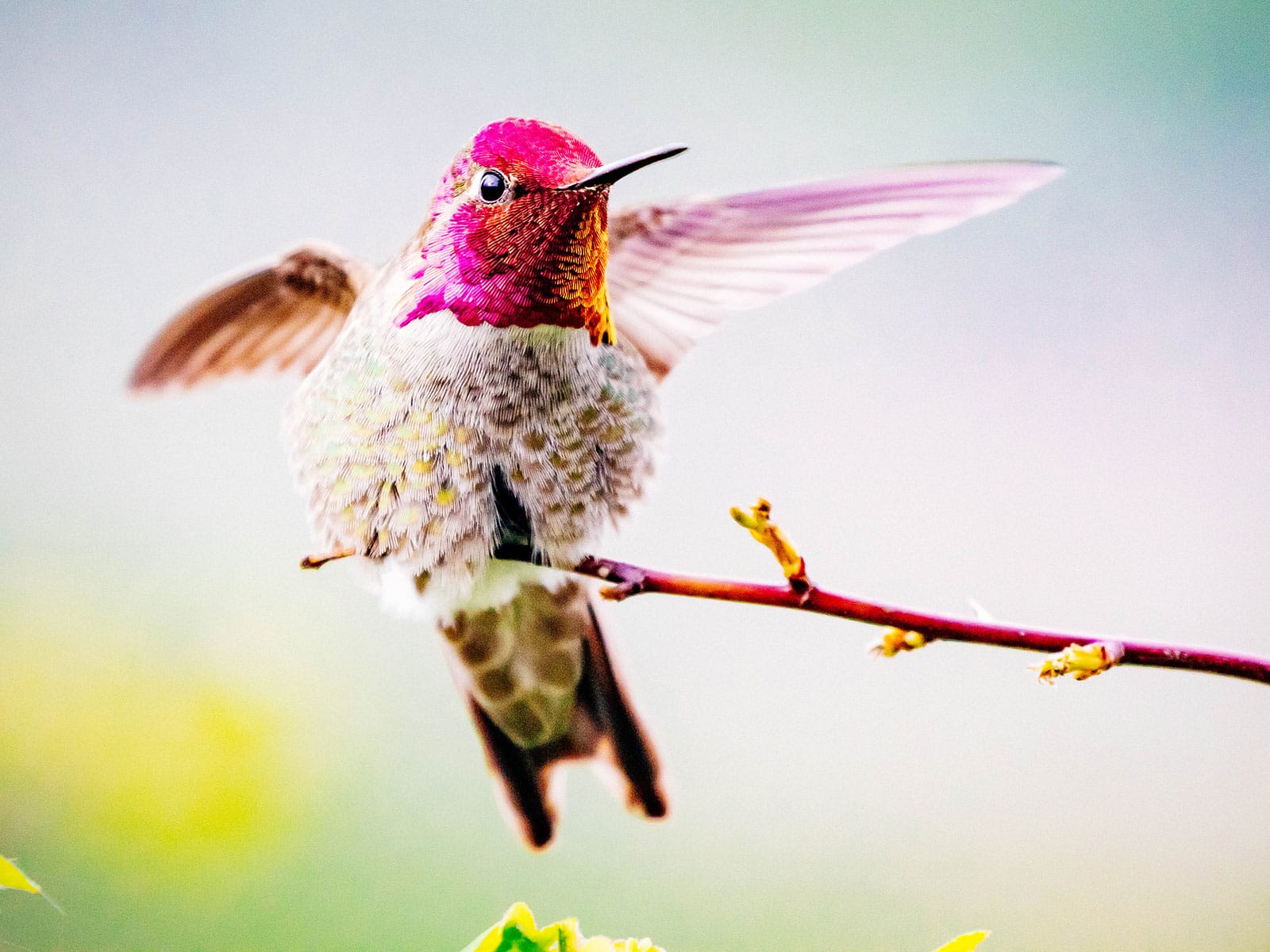Though you may have only seen a few in your yard, did you know there are over 360 species of hummingbirds in existence?
These graceful tiny birds, with their slender beaks and rapidly fluttering wings, belong to the order Apodiformes (a Latin name that translates as “footless” because of their inability to walk on the ground) and comprise their own scientific family, the Trochilidae.
Although most hummingbirds call Central and South America home, they’re present in pretty much all of the Americas to some degree. We tend to associate them with warm climates, but some can in fact be found as far north as Alaska—just not year-round.
Hummingbirds have this wide of a range because many species are migratory. They follow the seasons in search of their favorite flowers, with many breeding in North America but moving south in winter when the area runs out of nectar to drink. The champion migrator is the rufous hummingbird, which can travel a whopping 3,000 miles one way!
Around 40 species of hummingbirds can be found in the US, especially in the southern states. Many of these just get a little lost sometimes and actually belong further south, but others are considered native and what you’re most likely to see in your yard.
They’re important pollinators (just like bees and butterflies) and their presence in a garden is a real treat. (If you want to attract more hummingbirds, by the way, make sure you’re growing their favorite nectar-rich flowers or providing fresh homemade hummingbird food.)
Here’s a look at 14 beautiful native hummingbird species (plus a few that occasionally show up out of their normal range) and how to identify them.
Did you know?
Sorry, Hawaii—you guys are pretty much the only state where hummingbirds never pop up. You do have a bunch of unique honeycreepers, though, which fill the same ecological niche and are gorgeous birds too.
Common hummingbirds (> 1,000,000 in North America)
Ruby-throated hummingbird (Archilochus colubris)
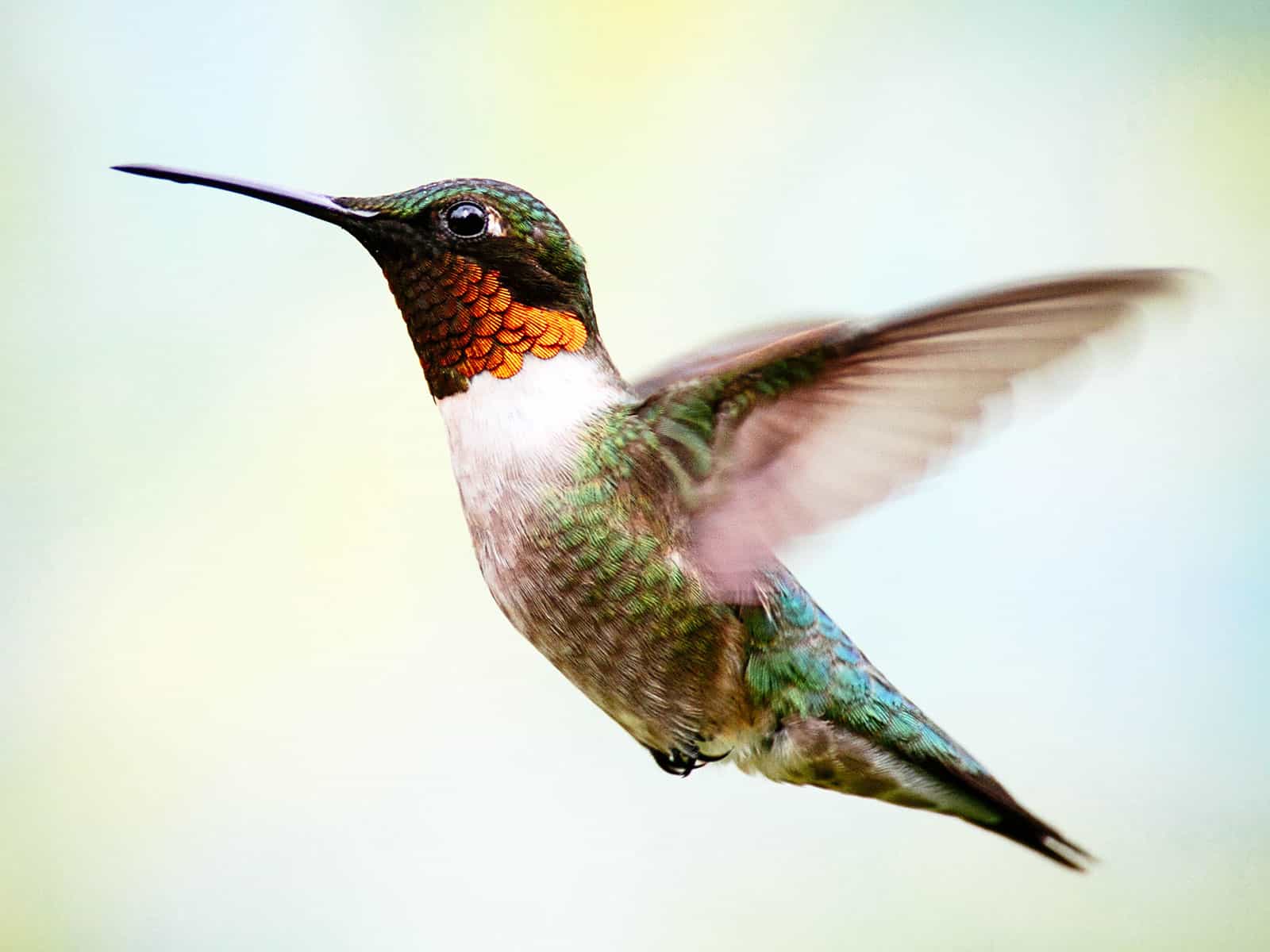
Let’s start off with our winner: According to the Partners in Flight database, the ruby-throated hummingbird is the most common hummingbird species in North America.
Although it spends its winters in Central America and Florida, this species migrates throughout eastern North America in the warmer months. It’s one of the few hummers that does this, as most occur only in the west!
These hummingbirds naturally occur in forested areas, but they have become very used to suburban life as well. They’re common visitors at feeders and may even choose your garden to build a nest.
Ruby-throats are not fussy about food, feeding on nectar from a wide range of flowers. Like most hummingbirds, they also consume insects (particularly when raising young) and tree sap.
Conservation status: Least Concern
Did you know?
Hummingbirds are usually strongly sexually dimorphic, meaning the males and females look different. In the ruby-throated hummingbird, for example, it’s only the male that displays the characteristic iridescent red throat feathers. Females are much duller in color.
Black-chinned hummingbird (Archilochus alexandri)
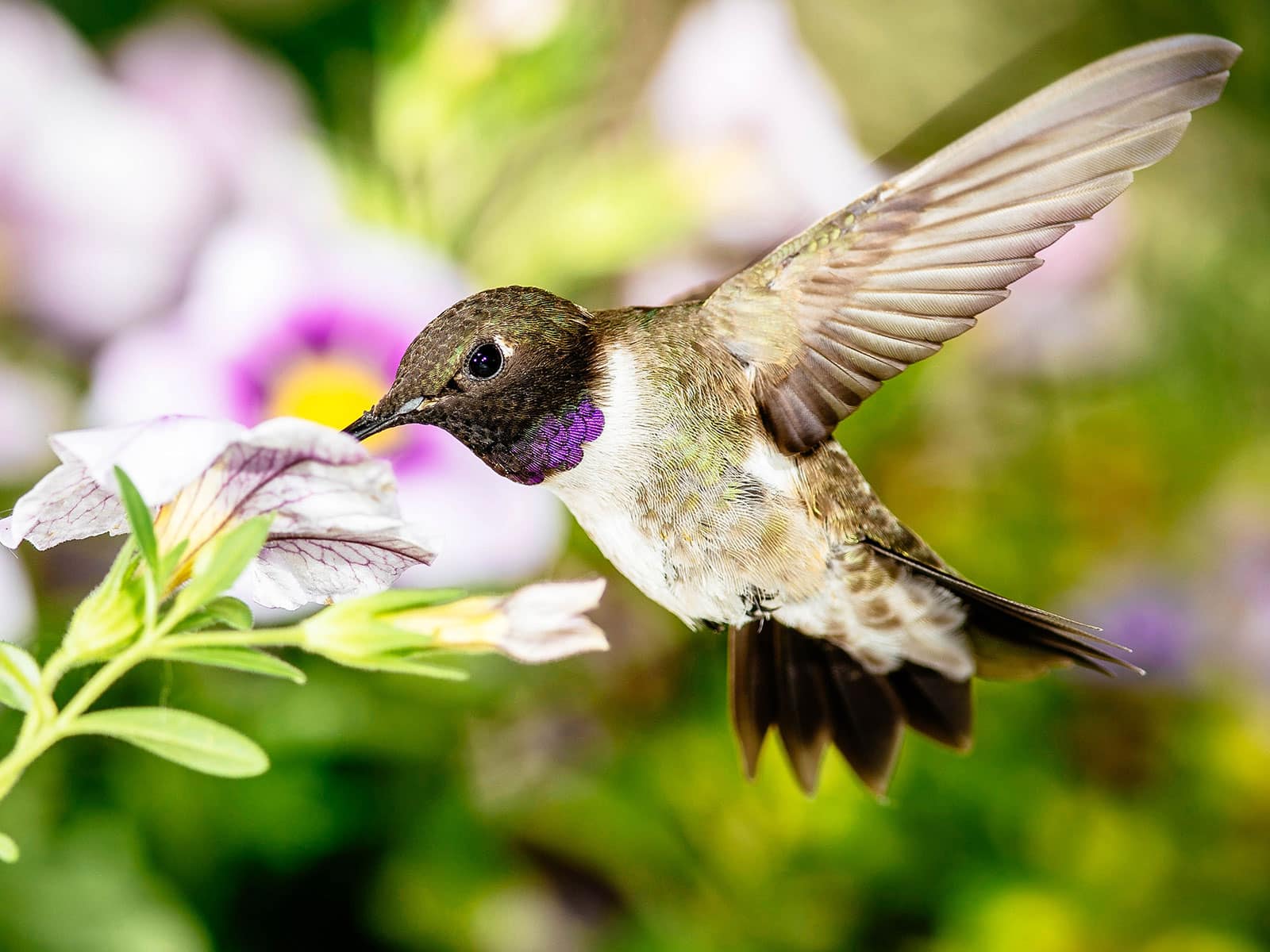
There are only two species in the hummingbird genus Archilochus: the aforementioned ruby-throated hummingbird and this one, the black-chinned hummingbird.
Whereas its cousin has made the eastern US its summer home, this species prefers the west. It’s not afraid of the cold, with some staying as far north as Canada year-round.
You can recognize male black-chinned hummingbirds by their black faces and iridescent purple throat patches, which the females lack. They like moist woodland habitats, although they’ll also pop up in more arid areas as long as there’s a good water source nearby.
Conservation status: Least Concern
Did you know?
The proper name for the typical colorful and iridescent chin/throat patch that many hummingbirds sport is a “gorget.” Historically, a gorget is a metal or cloth throat collar worn ornamentally or for protection.
Anna’s hummingbird (Calypte anna)
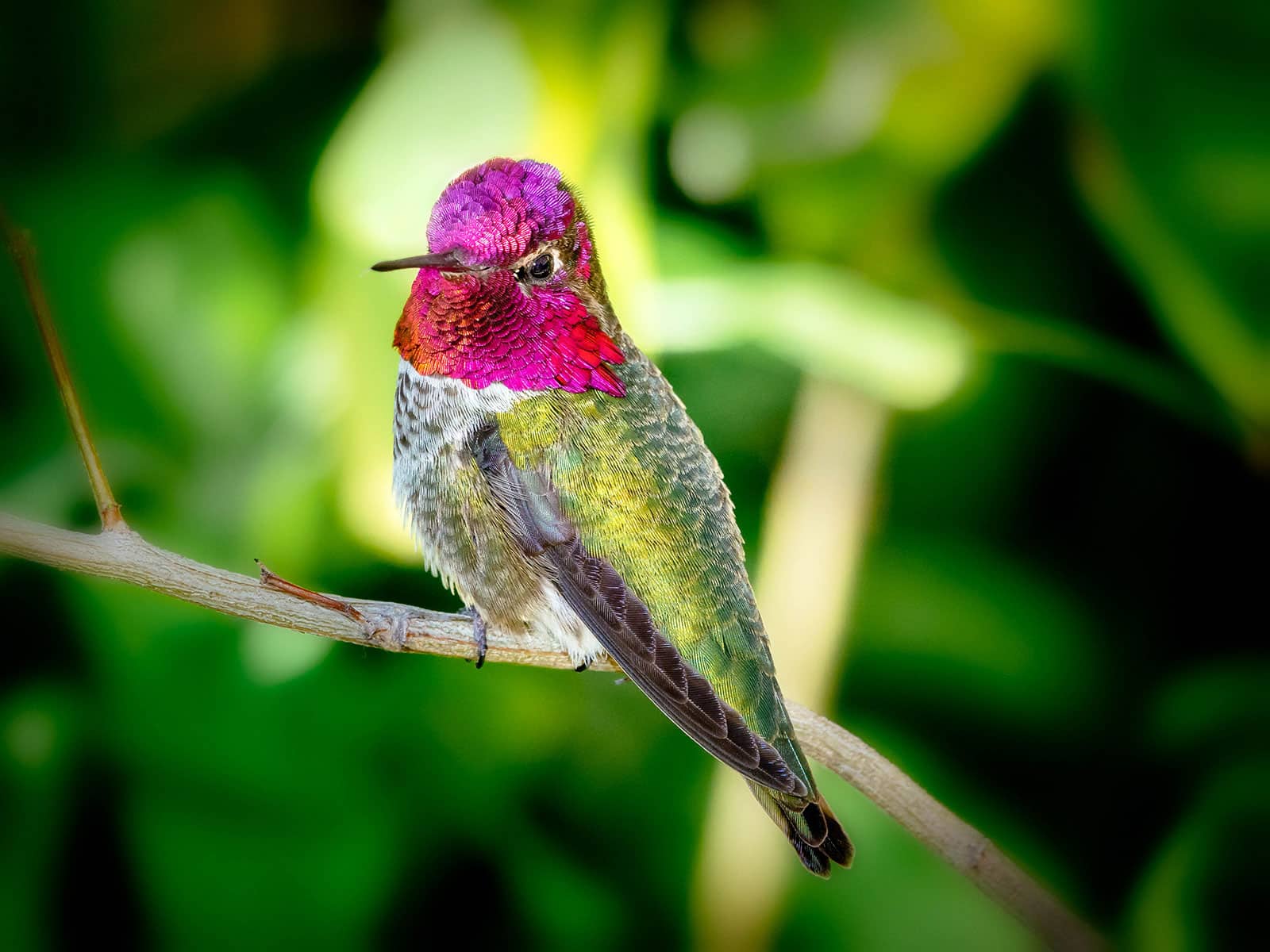
Can you believe those colors?! As is usual, female Anna’s hummingbirds are somewhat drab. The males, however, have a distinct flair for the dramatic, with shimmering purple heads and iridescent green backs.
Although it’s common in much of the western US today, this species used to only really be found in Baja California. It’s a fantastic example of what researchers call range expansion.
What happened is that when certain tropical plants became popular as ornamentals and more people began to put up hummingbird feeders, the Anna’s hummingbird managed to establish itself along most of the Pacific coast. Climate change likely also helped. Nowadays, some Anna’s hummers stay in chilly places like Seattle year-round.
Conservation status: Least Concern
Did you know?
Hummingbirds, especially this one, can survive the cold thanks to a mechanism called torpor. They can basically shut themselves down, lowering their metabolic rate and sitting still until temperatures rise again. If you spot a hummer in torpor, just leave it alone. It’ll “thaw out” eventually and fly off.
Costa’s hummingbird (Calypte costae)
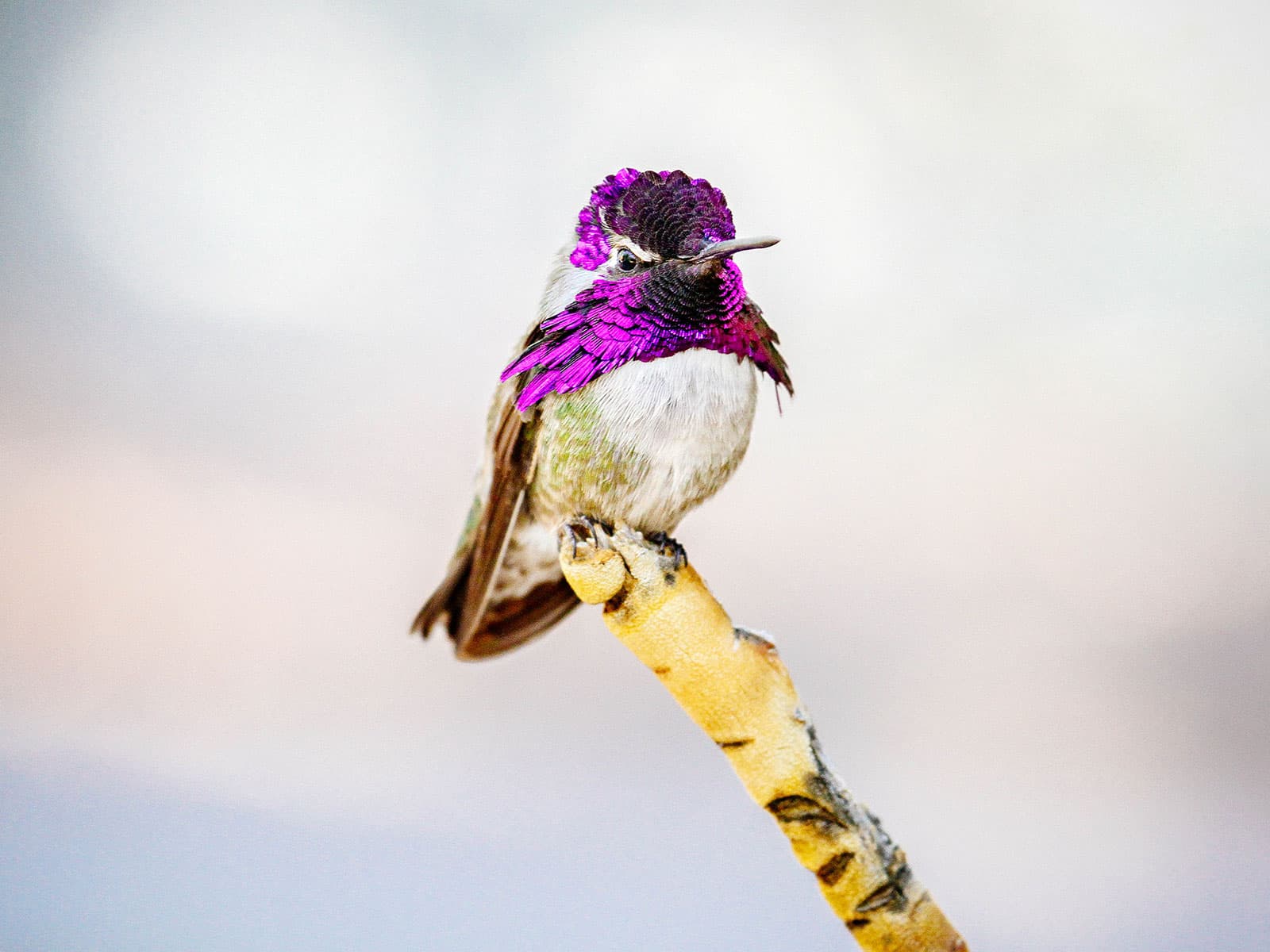
No, you’re not seeing double—the Costa’s hummingbird is a close cousin of the aforementioned Anna’s hummingbird, and the males sport similar purple head feathers. Costa’s are just a little fancier, though, as theirs are oversized and can be flared outwards to impress the ladies!
The Costa’s hummingbird, too, can be found on the west coast. It stays a bit further south, though, and is only present year-round in the southwest. The species doesn’t mind the heat and will happily call the Mojave its home as long as there’s some brush present. It also passes through gardens regularly (possibly including yours).
Conservation status: Least Concern
Allen’s hummingbird (Selasphorus sasin)

Some hummingbird species are mostly migratory, but not fully: part of the population stays in the same place year-round. The Allen’s hummingbird is one of them.
Most of these hummers migrate between southern Mexico and a thin strip of brushland along the California and Oregon coasts, but a small, sedentary subset has found a permanent home right on the Los Angeles coast.
Allen’s hummingbirds are mostly rusty brown in color, with a white breast and some green coloration on the back. The gorget is a shimmering orange-red. The species is notable for its feisty attitude; male Allen’s will sometimes attack much larger birds (including predatory ones!) during the breeding season.
Conservation status: Least Concern
Did you know?
Most hummingbirds are pretty territorial toward their own kind. You can see some serious quarreling going on around feeders and during breeding time, both within and between species.
Broad-tailed hummingbird (Selasphorus platycercus)
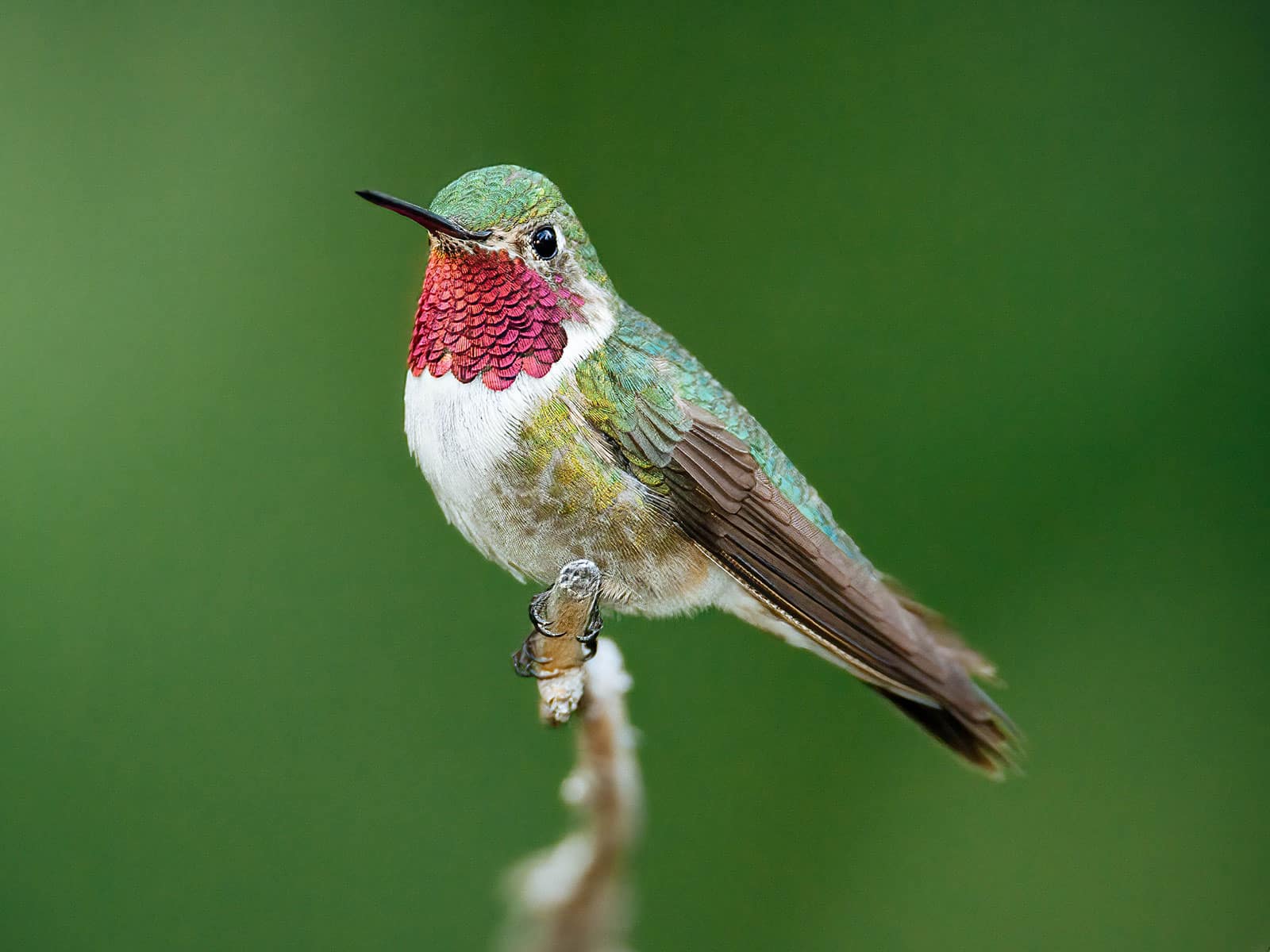
Here’s another little stunner! Male broad-tailed hummingbirds have a light-colored belly, shimmering green back and wings, and a rosy pink gorget. The breast is white, and the species also has a distinctive white eye-ring to set it apart from other hummers.
During the warm summer months, the broad-tailed hummingbird is a common sight in the western US. Unlike some of the other hummingbirds on this list, though, it avoids the coast, instead preferring mountain pine and oak forests. If you live at a higher altitude in a state like Arizona, New Mexico, and Colorado, it may well appear in your garden.
Conservation status: Least Concern
Calliope hummingbird (Selasphorus calliope)
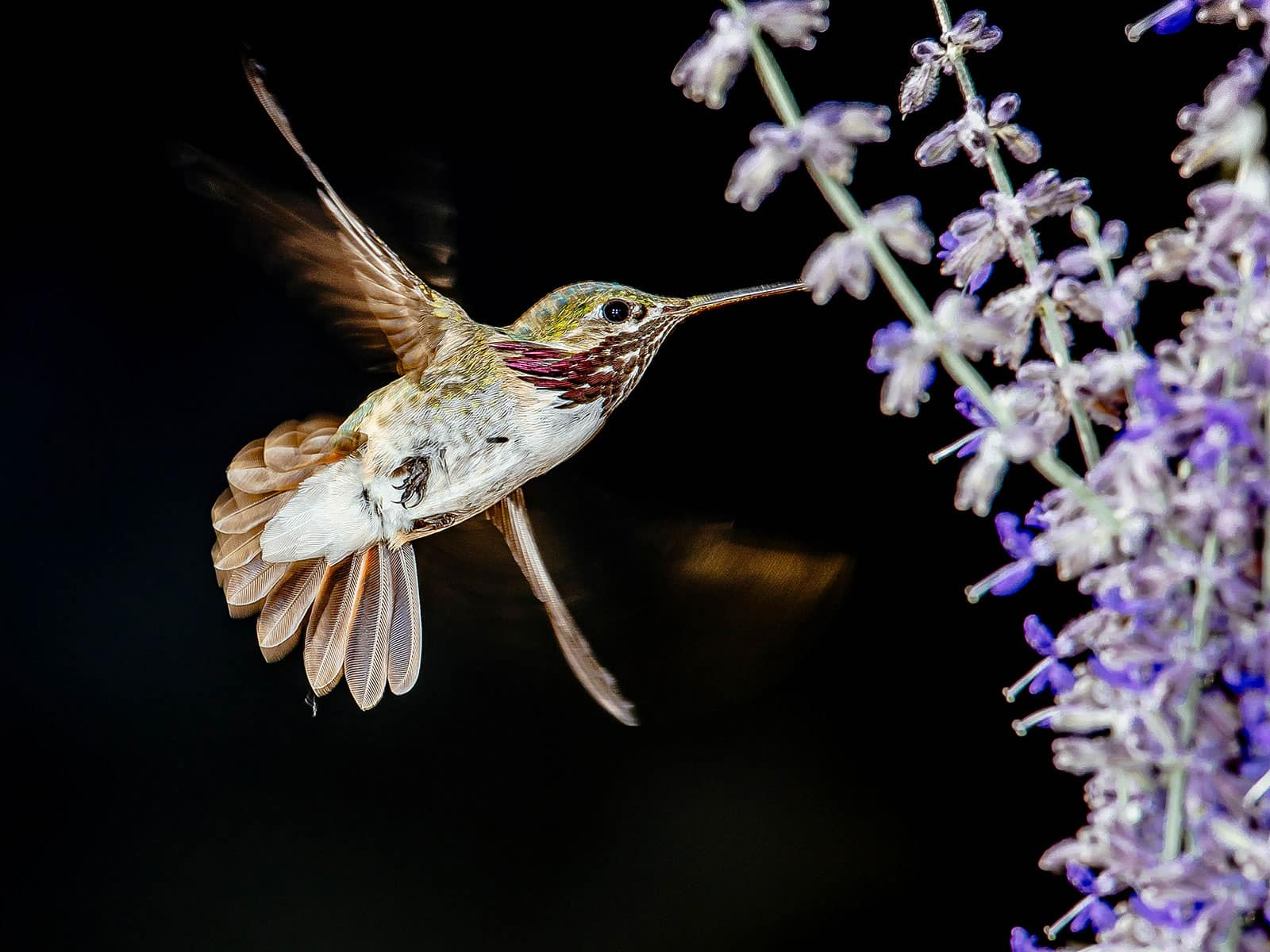
Say hello to the smallest hummingbird in North America! The calliope hummingbird grows to a maximum of 4 inches in length and weighs about the same as a US penny. Despite its tiny size, it’s a stunning species to look at, with a streaky, dark reddish gorget on the males.
This is another western species. It usually spends winters as far south as Guatemala, but migrates huge distances, sometimes ending up in the Canadian Rocky Mountains to feed and breed during the summer months. Like many other hummingbirds, it prefers mountainous regions, although it can also be spotted in the lowlands while it migrates.
Conservation status: Least Concern
Rufous hummingbird (Selasphorus rufus)
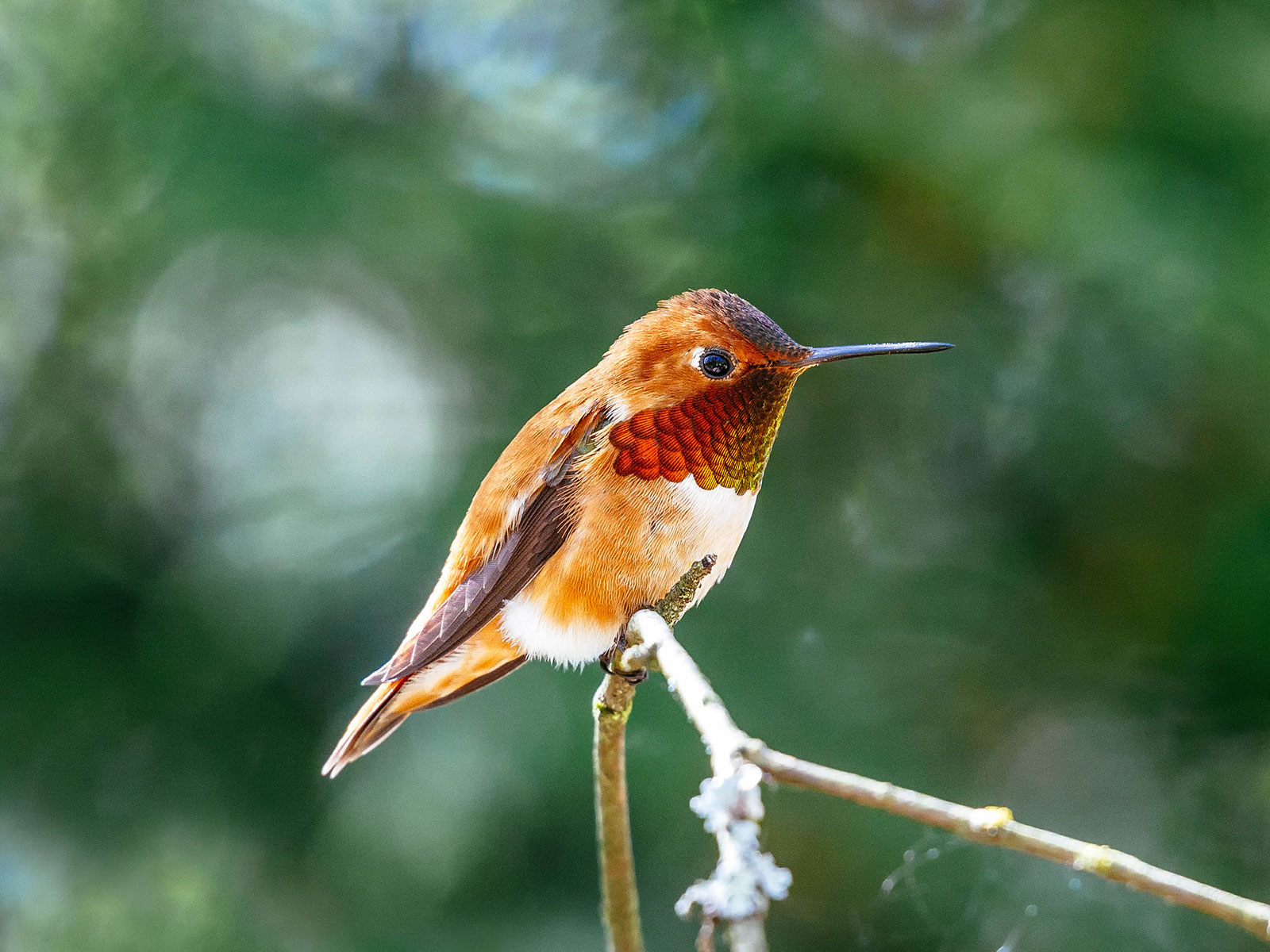
I briefly mentioned the rufous hummingbird in the introduction—it’s the farthest-traveling hummingbird of them all. Most of them winter in Mexico or the southernmost USA, but migrate as far north as southern Alaska to feed on abundant wildflowers and breed. Quite a feat for a bird that weighs a little less than one US nickel!
Male rufous hummingbirds are mostly brownish-red (better known as rufous) in color, with a metallic reddish gorget and white breast. Some males have green backs and heads, which makes them difficult to distinguish from their cousin, the Allen’s hummingbird.
Conservation status: Near Threatened due to forest loss, climate change, and the global decline in insect populations
Uncommon hummingbirds (100,000 to 200,000 in North America)
Broad-billed hummingbird (Cynanthus latirostris)
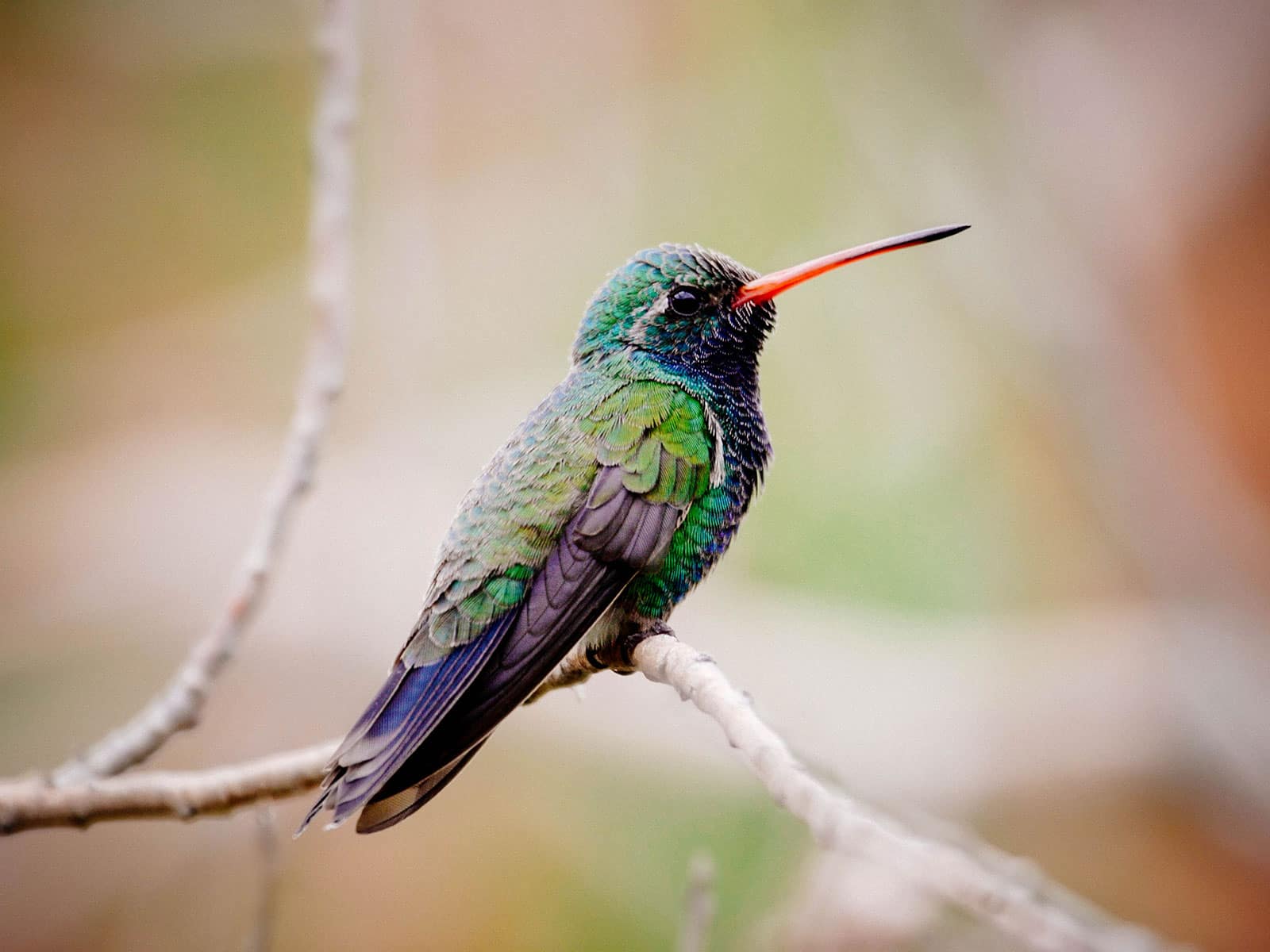
Broad-billed hummingbirds are easy to recognize by their reddish beaks, which are indeed broader than usual in hummers, and their brilliant shades of emerald and sapphire. They’re particularly beautiful, even for a hummingbird!
This species consists of three subspecies. One of these is found in the southwestern US (Arizona and New Mexico) during the breeding season; the rest stays in Mexico or even further south.
Because it likes gardens as much as it does oak woods and mountain canyons, the broad-billed hummingbird is easy to lure to your backyard with a hummingbird feeder.
Conservation status: Least Concern
Buff-bellied hummingbird (Amazilia yucatanensis)
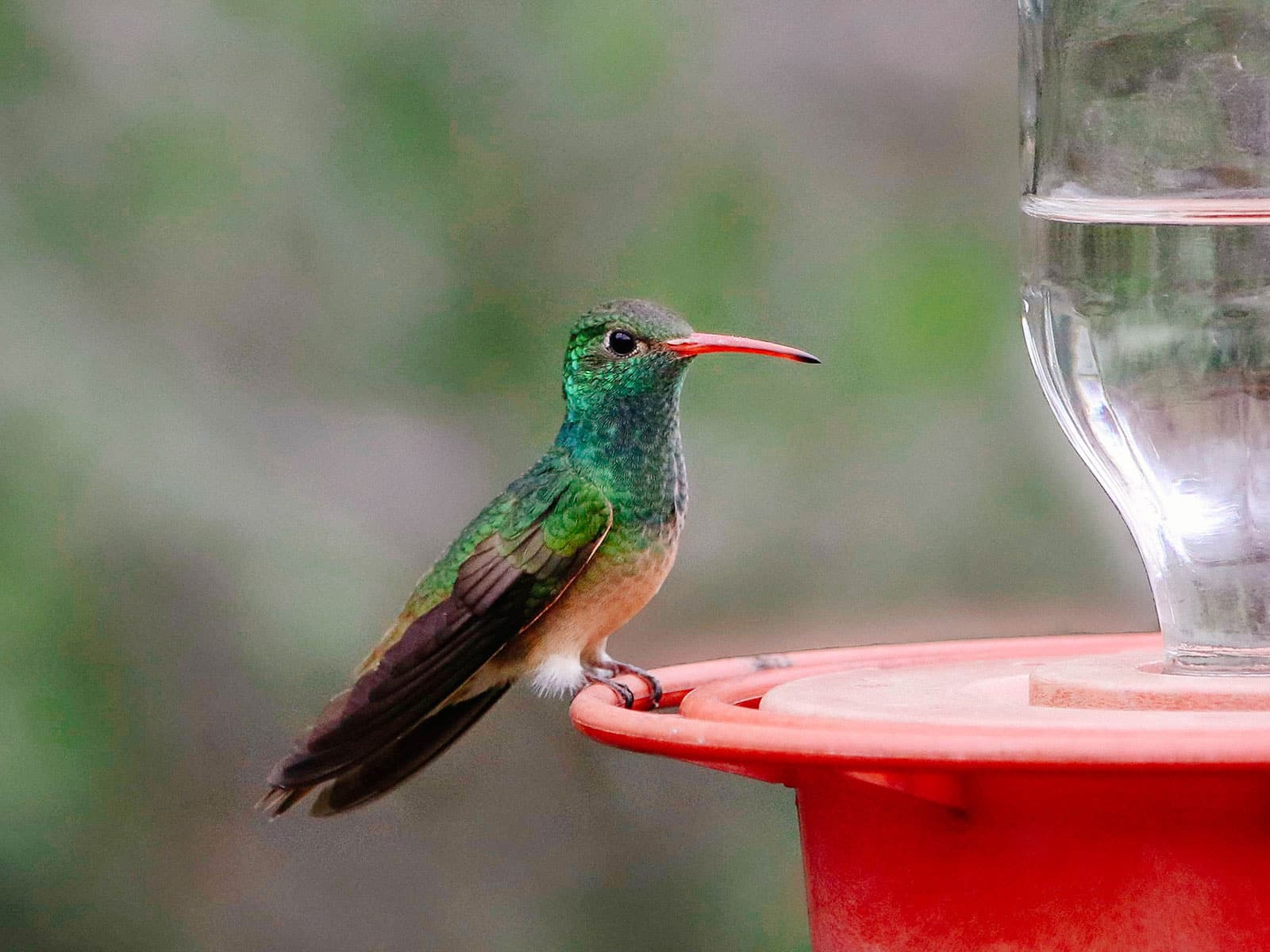
Only the second hummer species on this list to prefer the eastern half of the US to the western half, the buff-bellied hummingbird can be found along a thin coastal strip in southern Texas during the summer. Notably, this is one of the only species to migrate north in winter: some spend the cool months in Louisiana or even the Florida Panhandle.
Like the broad-billed hummingbird, buff-bellies have a red beak with a black tip. The males have green collars, faces, and backs, plus a rust-colored tail and orangish-red (buff) belly. They like (semi-)open, (semi-)arid landscapes and, of course, gardens with feeders.
Conservation status: Least Concern
Rare hummingbirds (<10,000 in North America, extreme south only)
Lucifer hummingbird (Calothorax lucifer)

The lucifer hummingbird is mostly a Mexican native, but occasionally crosses the border into Arizona, New Mexico, and West Texas. When it does, birders are in luck, because this really is quite a little gem!
The males have extra-long, shiny, amethyst-purple gorgets. They look somewhat similar to Costa’s hummingbirds, but they lack the iridescent crown.
Also known as the lucifer sheartail due to its forked tail, this hummer is a desert dweller that occurs mostly at high altitudes. It has a particular taste for Agave flowers, a favorite among hummingbirds in general, but will also go for other desert plants like cacti. The species will also pop up in gardens and visit feeders.
Conservation status: Least Concern
Blue-throated mountain-gem (Lampornis clemenciae)
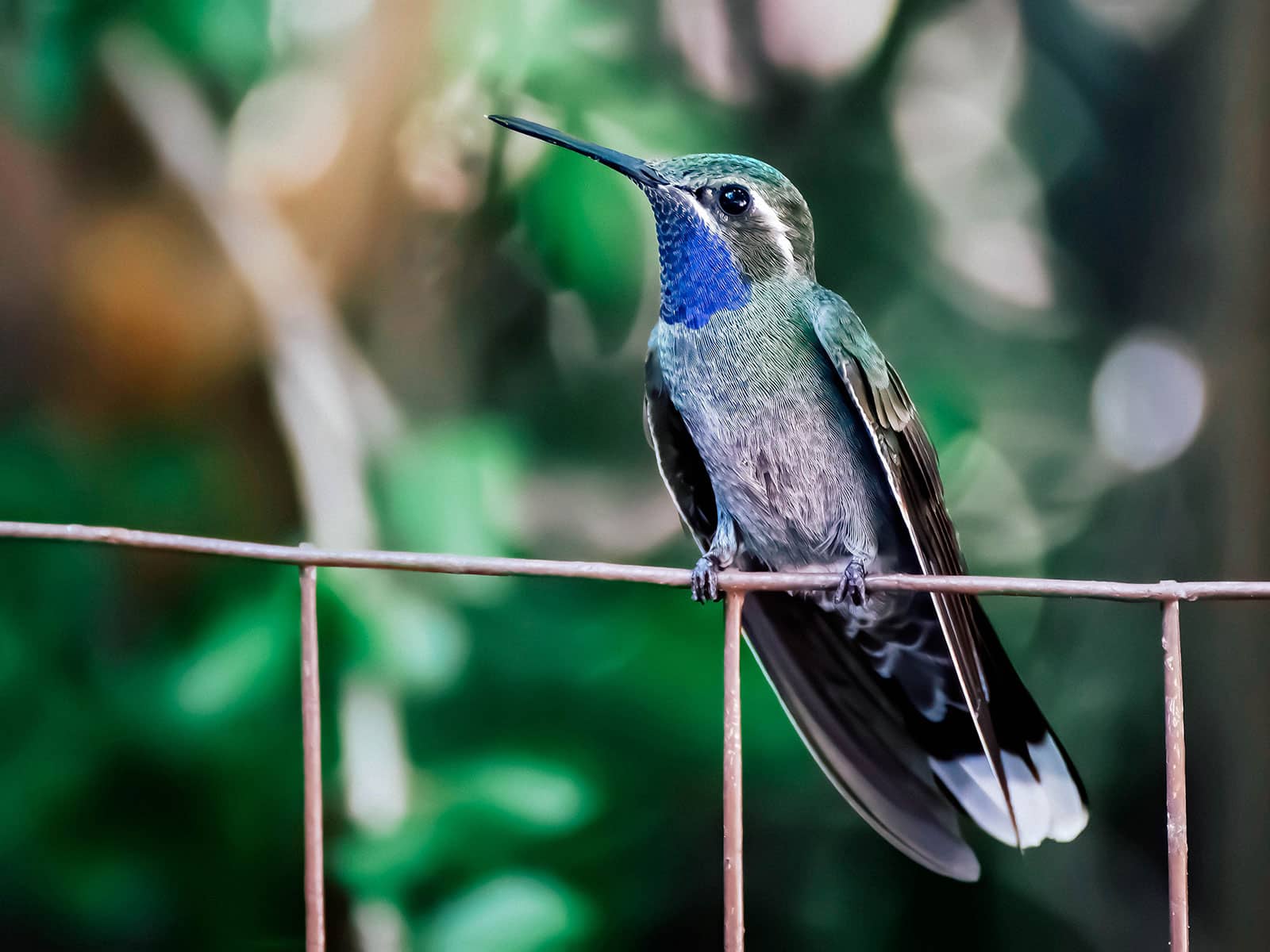
Say hello to the chunkiest hummingbird on our list. At a whopping 8 1/2 grams, the blue-throated mountain-gem weighs about the same as eight jellybeans—making it three times as heavy as the smallest species, the calliope hummingbird.
Another Mexican species, this one occasionally crosses into Arizona, New Mexico, and Texas. It likes river forests in mountainous areas, but will also visit feeders. You can recognize it by its larger size, the male’s bright blue gorget, and the white stripe right behind the eye.
Conservation status: Least Concern
Violet-crowned hummingbird (Ramosomyia violiceps)
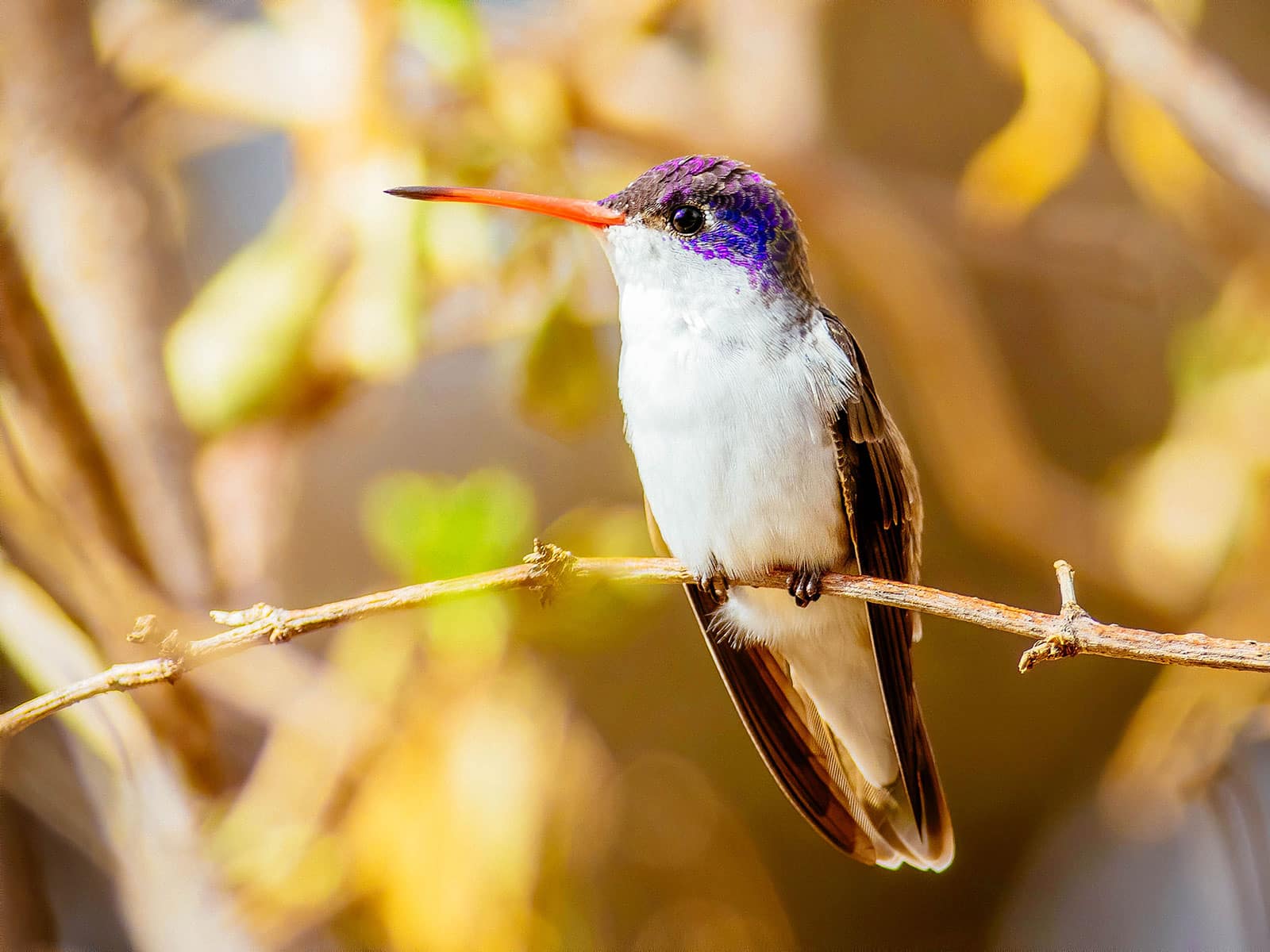
Although barely a couple of hundred individuals of violet-crowned hummingbirds, each year, head far enough north for the breeding season to end up in the US, I think it still counts!
You’ll definitely know it when you see it: this hummer is the only one that doesn’t have a colorful gorget. Instead, it’s recognized by its white belly and chest, blueish-purple crown, and red bill.
Like many other hummingbirds, violet-crowns are mostly found at higher altitudes. They like forest but can also be found in urban areas like parks and gardens, especially if there’s food to be found. In the US, they nest almost exclusively in Arizona sycamore trees.
Conservation status: Least Concern
Did you know?
The violet-crowned hummingbird used to belong to the genus Amazilia. It was moved to Ramosomyia in 2022.
Rivoli’s hummingbird (Eugenes fulgens)

Let’s wrap up this list with one of its most spectacular entries: Rivoli’s hummingbird. Formerly known as magnificent hummingbirds, males boast a dazzling green gorget, a shiny purple crown, and iridescent green wings. Even the females, whose backs are a shimmering green in color, are quite a sight to be had.
Almost as big as the blue-throated mountain-gem, this hummingbird also prefers high altitude habitats. It mostly inhabits forests and has a wide range spanning all the way from the southern US to as far south as Nicaragua. Like other hummingbirds, you can easily attract it by planting suitable flowers and putting out feeders.
Conservation status: Least Concern
Occasional visitors in North America
Hummingbirds can occasionally show up way outside of their normal range if they happen to get lost. If you find one that doesn’t match any of the North American natives listed above, your suspect may be what is often referred to as a vagrant.
Common visiting hummingbirds, especially in the southernmost US, include:
Mexican violetear (Colibri thalassinus)
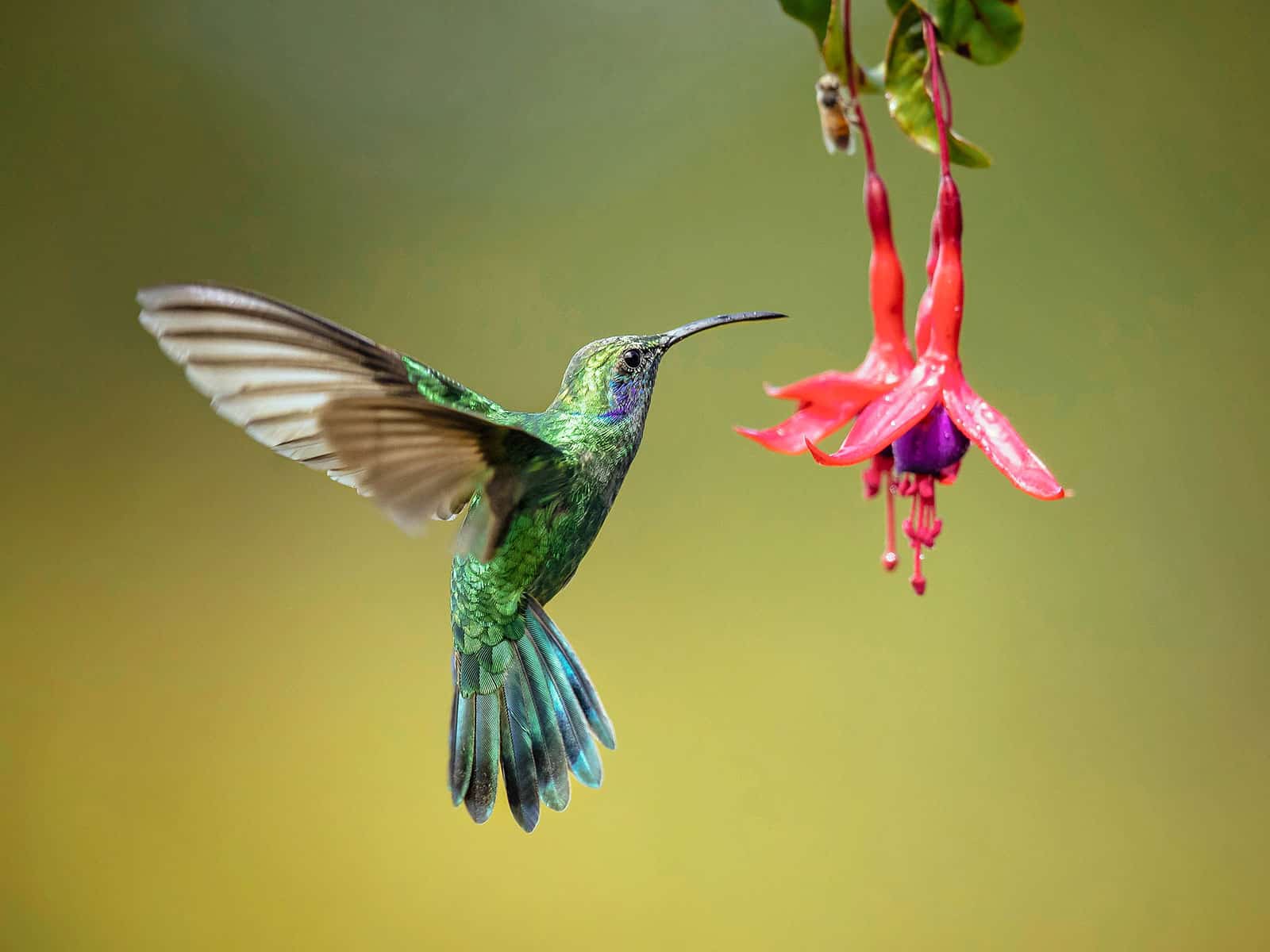
Green-breasted mango (Anthracothorax prevostii)
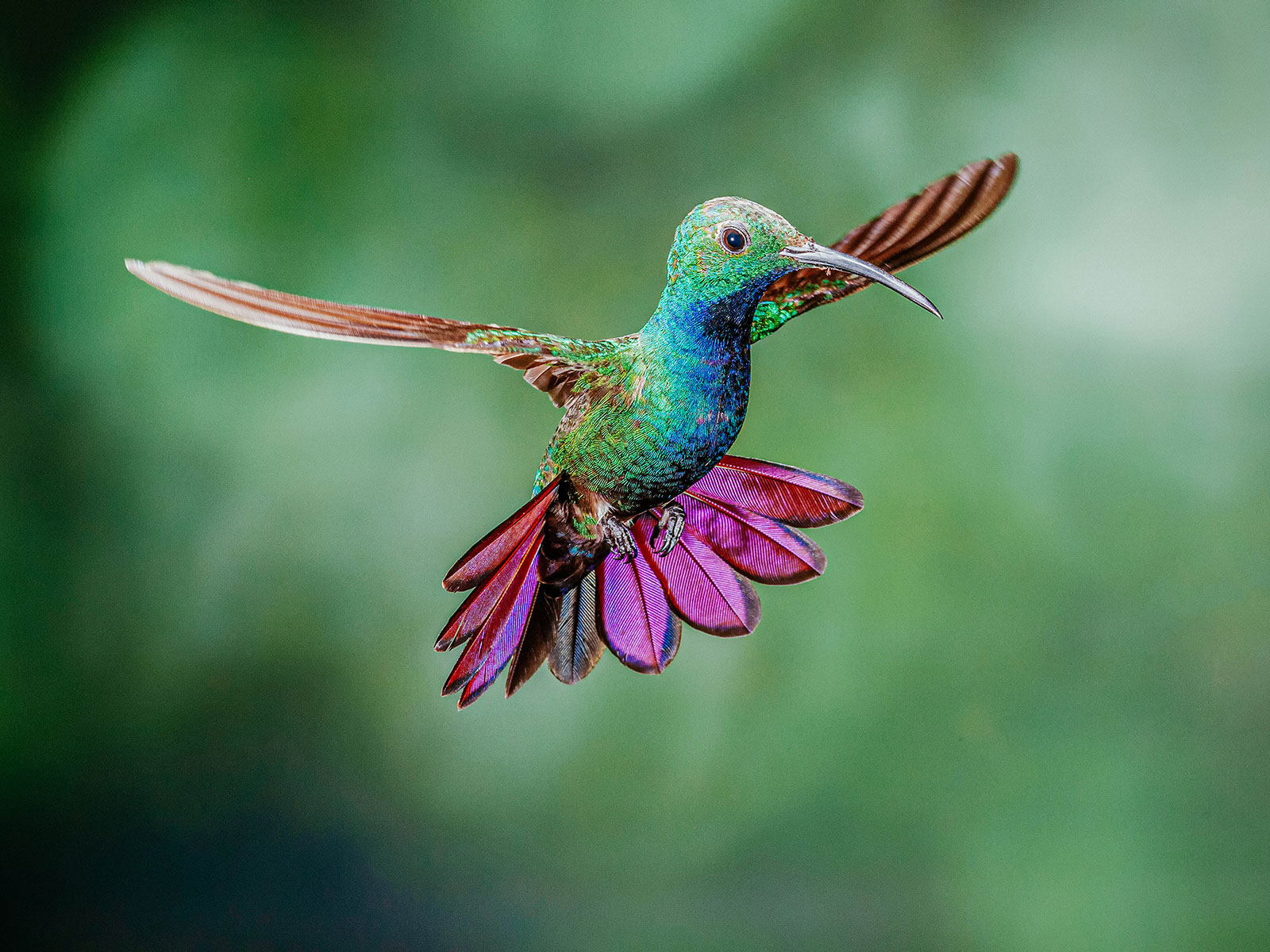
White-eared hummingbird (Hylocharis leucotis)
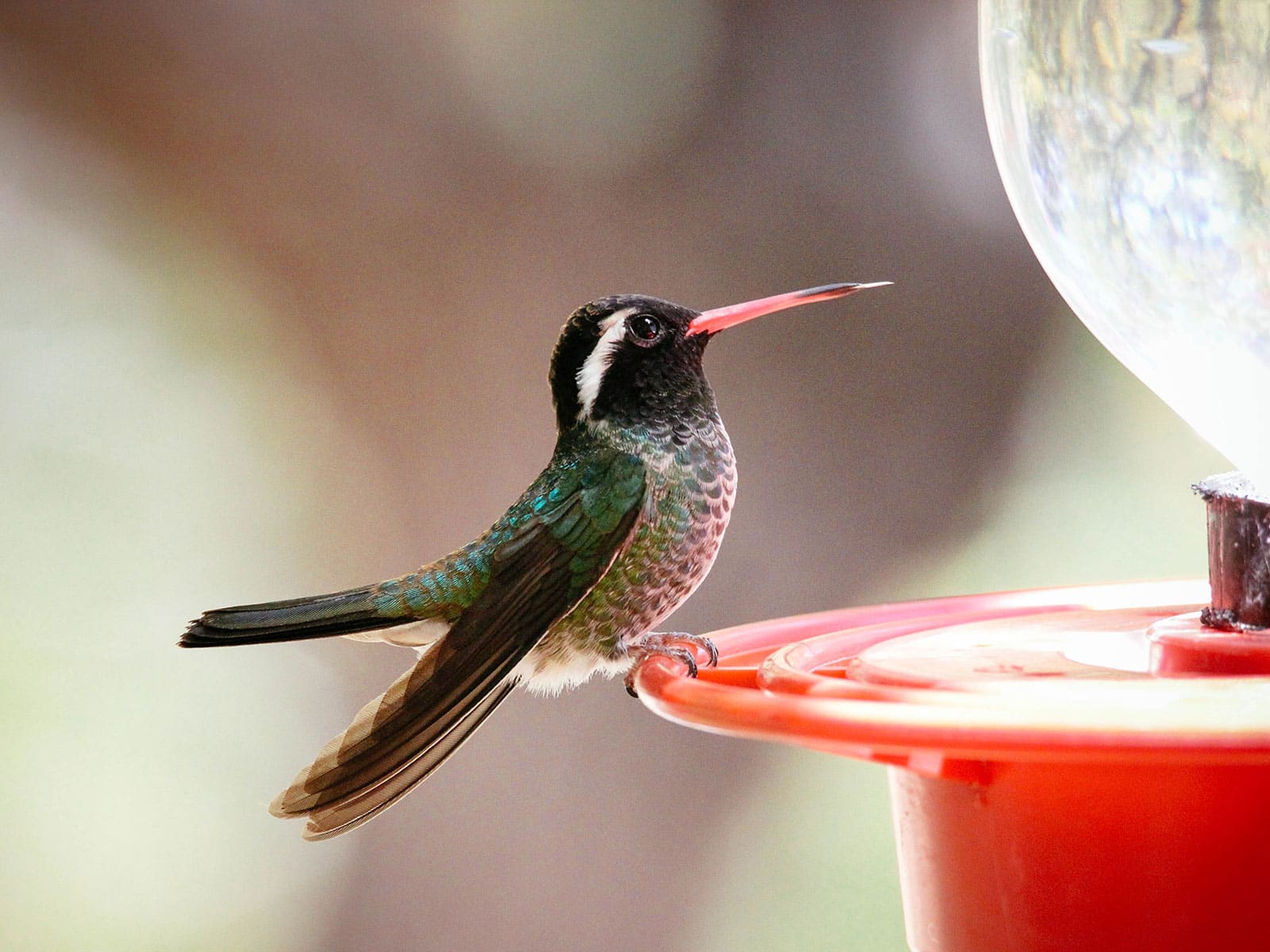
Berylline hummingbird (Saucerottia beryllina)
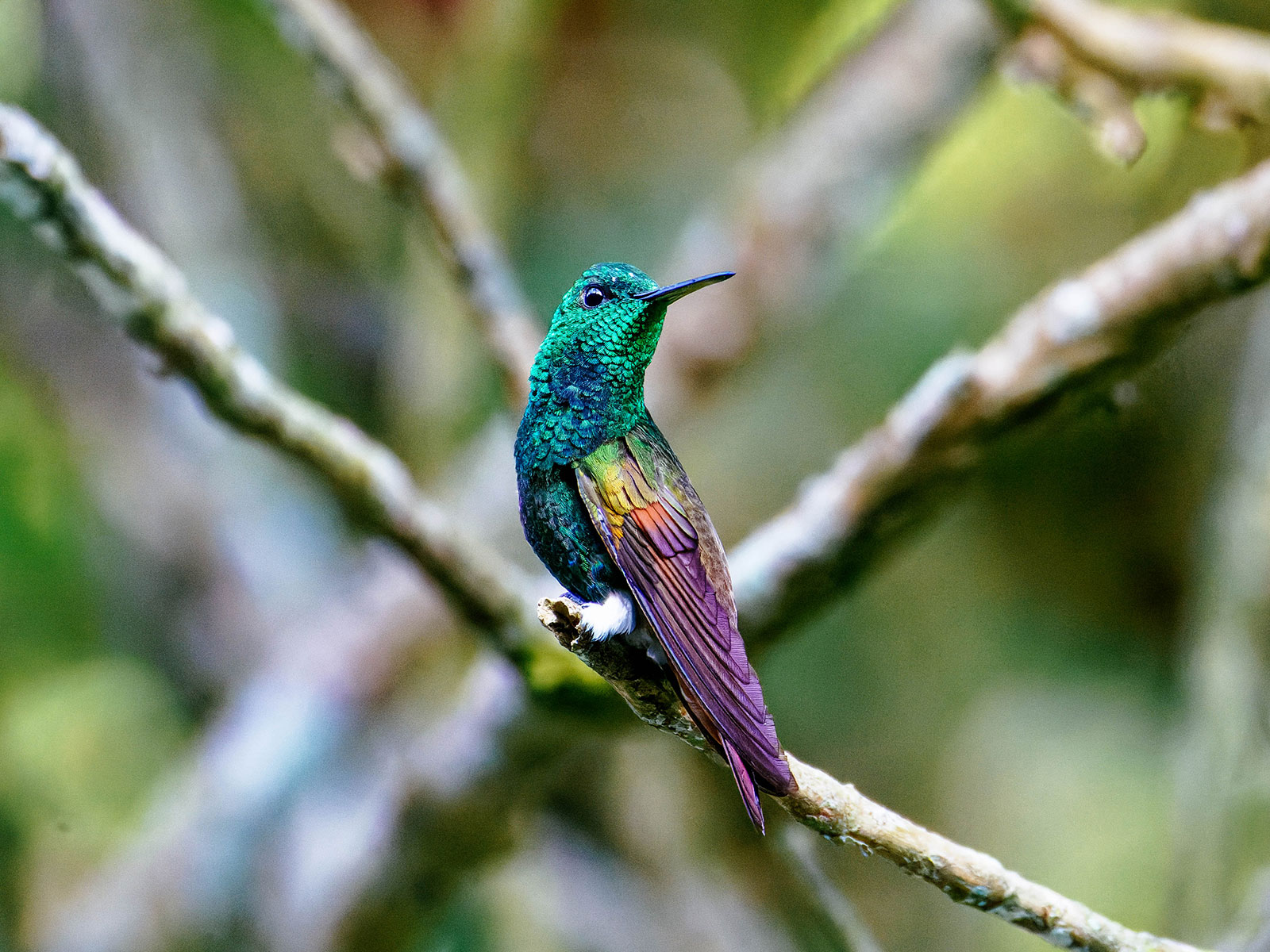
Sources:
Battey, C. J. (2019). Ecological release of the Anna’s Hummingbird during a northern range expansion. The American Naturalist, 194(3), 306-315.
Chesser et. al. (2022). Sixty-third supplement to the American Ornithological Society’s Check-list of North American Birds. Ornithology, 139(3), ukac020.
Kuban, J. F., Lawley, J., & Neill, R. L. (1983). The partitioning of flowering century plants by black-chinned and lucifer hummingbirds. The Southwestern Naturalist, 143-148.
Myers, B. M., Burns, K. J., Clark, C. J., & Brelsford, A. (2021). The population genetics of nonmigratory Allen’s Hummingbird (Selasphorus sasin sedentarius) following a recent mainland colonization. Ecology and evolution, 11(4), 1850-1865.
Rappole, J. H., & Schuchmann, K. L. (2003). Ecology and evolution of hummingbird population movements and migration. In Avian migration (pp. 39-51). Berlin, Heidelberg: Springer Berlin Heidelberg.
Sheppard, J. M. (1968). Berylline and Violet-Crowned Hummingbirds in Arizona. The Auk, 85(2), 329-329.
Vásquez-Aguilar, A. A., Ornelas, J. F., Rodríguez-Gómez, F., & Cristina MacSwiney G, M. (2021). Modeling future potential distribution of Buff-bellied Hummingbird (Amazilia yucatanensis) under climate change: species vs. subspecies. Tropical Conservation Science, 14, 19400829211030834.


